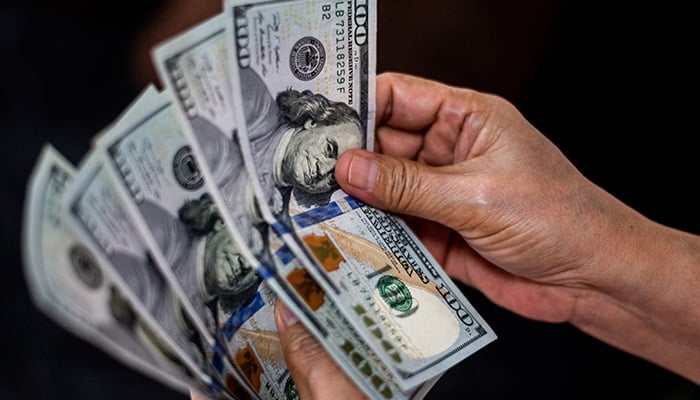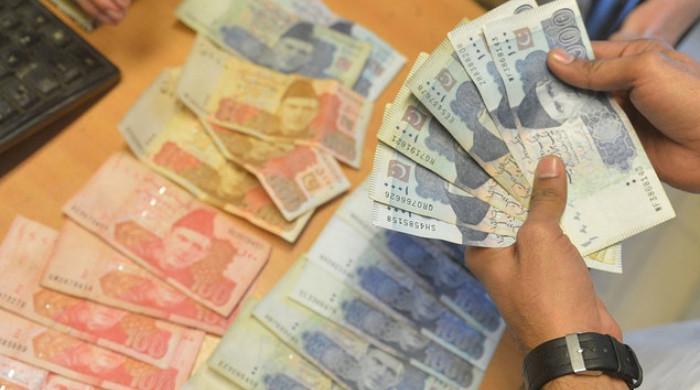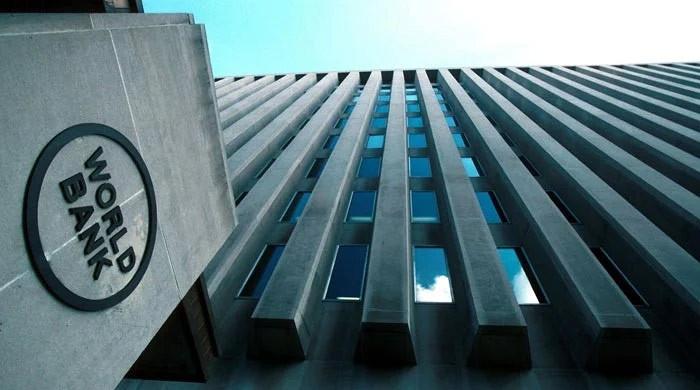Rupee likely to extend losses next week on importer demand
Local currency was trading at 279.26 against dollar on Monday, but dropped to 286.81 on Friday
July 23, 2023

- Importers step up purchases of dollars to pay for goods, services.
- Rupee opened at 279.26 this week and closed at 286.81 on Friday.
- "Market is concerned with the rapid fall of the rupee," says dealer.
KARACHI: The rupee may extend its losses next week as importers step up their purchases of dollars to pay for goods and services, while the government resists taking measures to curb the currency's slide, in line with the International Monetary Fund's bailout condition to let the exchange rate reflect market forces, The News reported Sunday.
During the outgoing week in the interbank market, the local unit fell 2.63 percent, or Rs8, against the dollar. The rupee was trading at 279.26 to the dollar on Monday, but it dropped further and finished the day at 286.81 on Friday.
"Due to the demand for US dollars for import payments and the lack of central bank intervention to halt the rupee's drop as required by the IMF, we foresee the rupee to stay under pressure next week," said a foreign exchange trader.
Although the rupee weakened, the country's foreign exchange reserves were boosted. As of July 14, the State Bank of Pakistan's foreign exchange reserves climbed by $4.2 billion, reaching $8.7 billion.
The country's overall reserves increased by $4.2 billion, totaling $14.1 billion. Commercial banks' reserves rose by $24 million to $5.3 billion.
According to the SBP, last week saw a significant increase in the SBP's reserves due to inflows of $2 billion from the Kingdom of Saudi Arabia, $1.2 billion from the International Monetary Fund, and $1 billion from the United Arab Emirates.
After the IMF programme, markets were expecting the letters of credit confirmation charges to normalise. Unfortunately, they are still hovering around 7%-8% and may require some lobbying to bring it to near pre crises levels of 35 basis points, said Tresmark in a note.
"Market is concerned with the rapid fall of the rupee, which depreciated by about Rs8 last week. With SBP's instructions to banks to manage import payments themselves, banks are in a race to fund their nostros, eagerly buying dollars," it said.
In fact, some banks are giving rates of over 7 percent on dollar deposits to lure in new forex, it added.
"Additionally, some pent-up defense payments (usually done by June end) have brimmed over to July.
With the 'go slow' on opening new LCs still in place, analysts expect the rupee to consolidate between the 286-290 region, especially as ADB [Asian Development Bank] and World Bank's commitment will start to materialise and China's rollover of $600 million will boost liquidity."
The IMF's suggested solutions may be sound in theory, but they simply don't work for Pakistan, according to Tresmark.
Fighting a fiscal problem with a monetary measure of hiking interest rates, prescribing free forex market where there are no market makers in a highly regulated and illiquid market, and finally advising that the interbank market should be close to the open market, the note explained.
With the rupee still undervalued on a real effective exchange rate basis (the latest number was 87.75 for June), the IMF could have prescribed something more scientific like purchasing power parity for a fair rupee value.
"In fact, rupee is even undervalued on the Big Mac index (GDP adjusted or otherwise). The open market is peanuts when compared to the interbank market (in terms of volumes)," Tresmark said.
"But all of this also shows the government's failure in convincing the lender on these aspects, even though there is adequate ammunition out there in the form of past precedents and other economies to persuade them."









